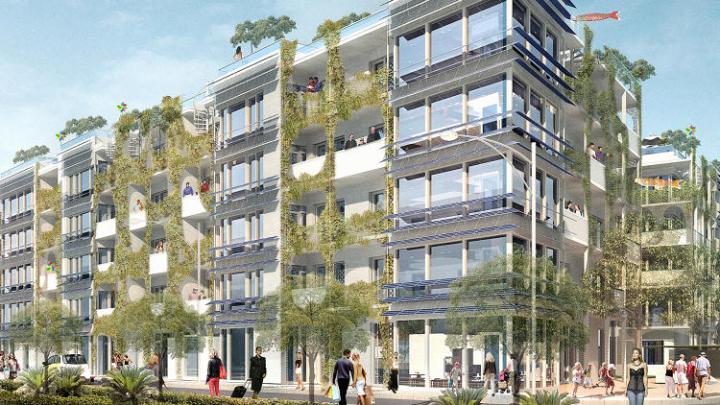
In order to meet the standards for Passivhaus, a building must demonstrate superior thermal performance and be incredibly airtight while still maintaining adequate airflow. All of this equals a minimal requirement of energy for heat production. To date there are over 30,000 buildings, both commercial and residential, that have been constructed to this standard.
In Hiedelburg, Germany, construction has begun on what will be the largest passive housing building to date. A 162-unit apartment complex is set to be erected in a former freight yard and will include several buildings ranging from five to eight stories high.
The size of the building is actually making it easier to conserve energy since there is so much surface area. Designs include solar panels built into the many vertical lines of the buildings rather than only the roof. The solar panels have a dual purpose. They provide shade to the building, cooling it, while also gathering energy. Having the buildings nestled closer together will further reduce any energy loss.
Unlike many passive buildings, these structures will have windows that occupants can open and close. The designers believe that while there is an importance in maintaining an airtight building, it is more energy efficient to allow people to cool their space by opening a window rather than forcing them to run a ventilation machine all the time.
A lot of resources have gone into maintaining the air quality as well. There are automatic sensors which will activate the air exchange if they detect low air-quality levels. Plants have been placed around the building to provide both shade and to improve air quality. Even the paint on the walls has been treated with titanium which will eliminate harmful smog from the air.
The entire design is made to be not only energy efficient, but also aesthetically pleasing. Construction is set to wrap up in late 2017.



